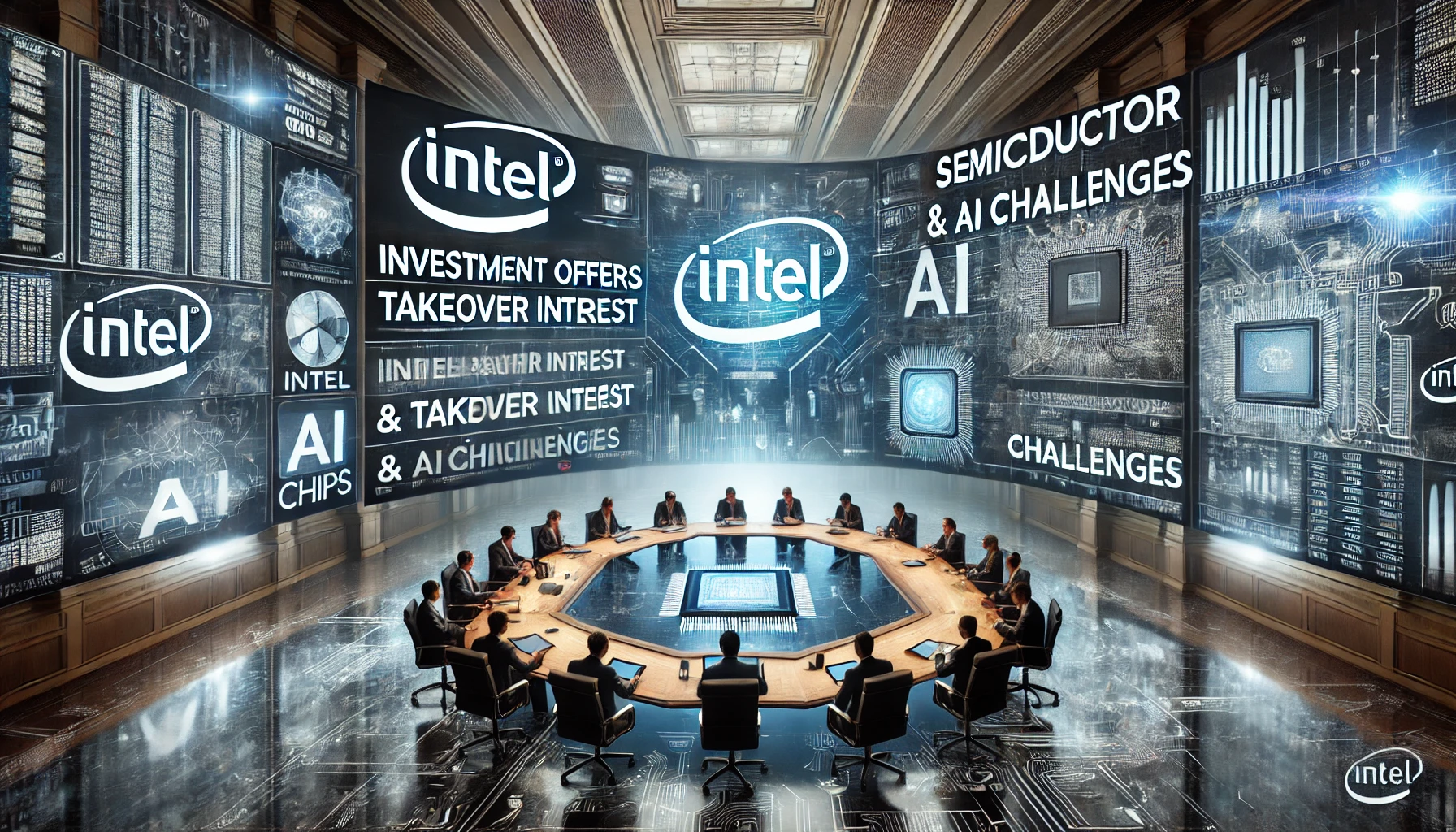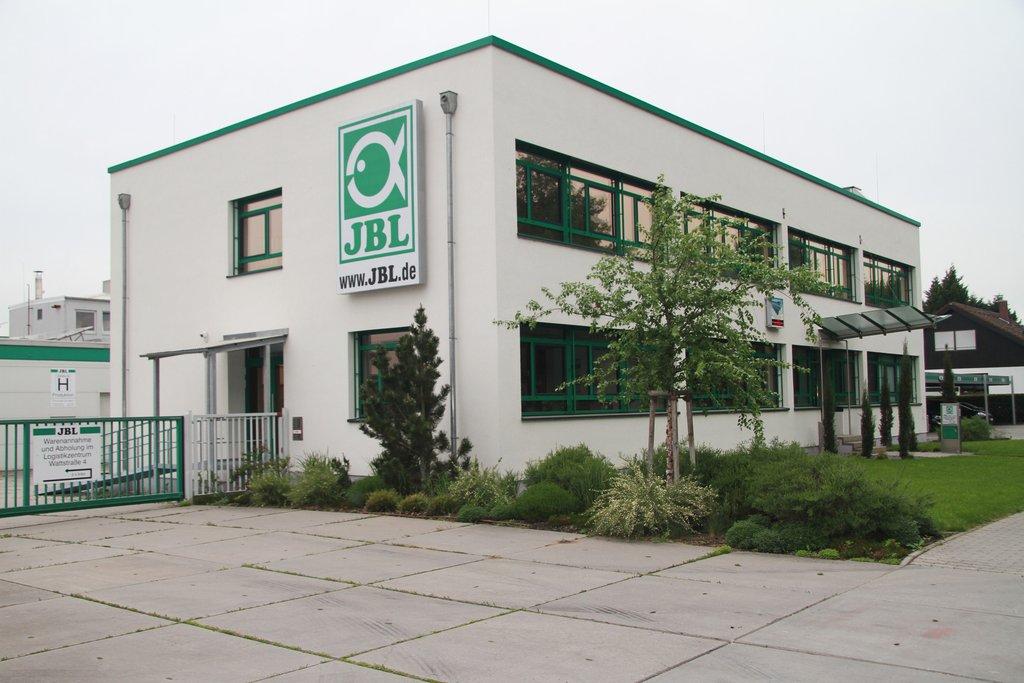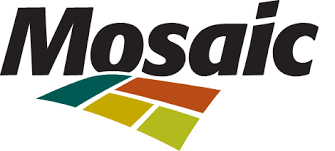
Intel faces strategic decisions amid investment offers and takeover interest, navigating challenges in the evolving semiconductor and AI markets.
Intel's Strategic Maneuvers: Evaluating the Apollo Investment Offer and Qualcomm Interest
Intel (NASDAQ:INTC), once a dominant leader in the semiconductor industry, finds itself navigating a challenging period marked by declining sales and a significant drop in stock value. Amid these struggles, recent reports suggest potential lifelines for the company, including a proposed multibillion-dollar investment from a global asset management firm and the possibility of a takeover by a competing chipmaker. These developments could dramatically reshape Intel's future in a sector undergoing rapid transformation driven by technological advances and market shifts.
Apollo’s Multibillion-Dollar Investment Proposal
Intel has reportedly received an offer from a major global investment firm to inject up to $5 billion into the company. The proposed investment, which could take the form of an equity-like deal, aims to provide Intel with financial flexibility and support its strategic initiatives. However, as discussions are still in the preliminary stages, there is a possibility that the size of the investment could change, or the talks could fall through entirely.
This proposed investment is significant for several reasons. Intel has faced increasing pressure to reverse its declining market share and regain its competitive edge in the semiconductor industry. Once a leader in the sector, Intel has seen its stock price plummet by nearly 60% in the current year, reflecting the challenges it faces both operationally and strategically. The company’s shrinking sales, exacerbated by delays in product rollouts and increased competition, have created a sense of urgency for Intel to explore alternative financial strategies. The proposed investment by the asset management firm could offer a buffer for Intel as it looks to stabilize its financials and implement long-term growth strategies.
Furthermore, this is not the first time the asset management firm has expressed interest in Intel. Earlier in the year, the same firm acquired a 49% stake in a joint venture that controls a chip manufacturing plant in Ireland. This existing relationship could facilitate a smoother negotiation process for the current proposal, making it more likely that both parties will reach a mutually beneficial agreement. Should the investment go through, it would give Intel much-needed capital to invest in research and development, improve its manufacturing capabilities, and potentially make acquisitions to strengthen its position in the market.
Qualcomm’s Takeover Approach
Parallel to the investment talks, Intel has also caught the attention of a major competitor in the semiconductor space. Qualcomm, another leading chipmaker, has reportedly initiated discussions with Intel regarding a potential acquisition. Although these talks are still in the early stages, they signal the possibility of one of the most significant deals in the tech industry. A successful acquisition could reshape the competitive landscape of the semiconductor sector, positioning the combined entity as a formidable player in the global market.
While Qualcomm has not yet made a formal offer, the interest reflects broader trends in the semiconductor industry, where consolidation has become a key strategy for companies looking to achieve scale and reduce competition. A potential merger between Qualcomm and Intel would likely face regulatory scrutiny, particularly given the size and influence of both companies in the global tech landscape. Regulatory concerns could arise due to antitrust issues and the impact on competition, especially in an industry that is critical to national security and technological innovation.
Qualcomm's interest in Intel also underscores the latter’s strategic importance in the semiconductor sector, despite its recent challenges. Intel has a rich history of innovation, and its assets, particularly in chip design and manufacturing, remain valuable. Qualcomm's potential acquisition of Intel would enable it to leverage these assets to bolster its own product offerings and expand its reach in key markets, such as data centers and artificial intelligence (AI).
The Competitive Landscape in the Semiconductor Industry
The semiconductor industry is in the midst of rapid evolution, driven by advancements in AI, 5G technology, and increasing demand for high-performance computing solutions. Intel, like other chipmakers, has had to adapt to these changes while facing stiff competition from rivals. Companies such as Qualcomm and NVIDIA have aggressively pursued strategies to capitalize on the growing demand for AI and machine learning applications, particularly in the data center space.
Intel has responded to these challenges by focusing on AI-driven innovations. Earlier this year, the company introduced its next-generation AI chip, the Xeon 6 processor. This chip promises enhanced performance and power efficiency, aimed at meeting the increasing demands of data centers and AI workloads. According to Intel’s CEO, AI is driving a new era of technological innovation, and the company’s advancements in semiconductor technology are key to pushing the boundaries of computing capabilities.
Despite these efforts, Intel has struggled to regain its footing in the highly competitive semiconductor market. Its delayed transition to smaller, more efficient chip designs, coupled with supply chain disruptions and increased competition from companies like AMD, has contributed to its declining market share. The proposed investment from the global asset management firm and the potential takeover by Qualcomm are both indicative of the growing recognition that Intel’s assets and capabilities are still valuable, even as the company faces significant headwinds.
Market Sentiment and Stock Performance
The semiconductor sector has been a focal point for investors, particularly given the industry's critical role in powering everything from smartphones to cloud computing infrastructures. Market sentiment around Intel has been mixed, with analysts offering varying perspectives on the company’s prospects.
Analyst projections for Intel’s stock price reflect both optimism and caution. The average 12-month price target for Intel is approximately $31.80, which represents a 39.41% increase from the current stock price of $22.81. However, this projection is based on Intel’s ability to execute its strategic initiatives and navigate the challenges it faces in a competitive market. Analysts remain cautious, with the consensus rating for Intel being “Hold.” This indicates that, while Intel’s stock is not expected to outperform the market significantly, it may still offer some upside potential if the company can stabilize its financial performance and capitalize on growth opportunities.
Intel’s financials reveal a mixed picture. For the current fiscal year, the company is expected to generate $53.35 billion in revenue, a slight decrease from the previous year’s $54.23 billion. However, analysts project revenue to increase to $57.54 billion next year, reflecting a potential turnaround in Intel’s fortunes. Similarly, Intel’s earnings per share (EPS) are expected to grow significantly, from $0.27 this year to $1.16 next year, marking a 325.42% increase. These projections suggest that, while Intel faces short-term challenges, there is optimism that the company’s long-term prospects remain intact.
What This Means for Intel’s Fundamentals
Intel’s fundamentals, particularly its balance sheet and cash flow position, are critical to understanding its ability to weather the current storm and pursue growth opportunities. The company has $29.27 billion in cash, but it also carries a significant amount of debt, totaling $53.03 billion. This gives Intel a net cash position of -$22.51 billion, which may limit its financial flexibility in the short term. However, the proposed investment from the global asset management firm could help alleviate some of these pressures by providing Intel with much-needed capital.
Intel’s valuation metrics also highlight the challenges it faces. The company’s trailing price-to-earnings (P/E) ratio is 99.29, significantly higher than the industry average, indicating that the stock may be overvalued relative to its earnings. However, Intel’s forward P/E ratio is expected to improve to 66.25 as earnings recover, reflecting the anticipated turnaround in the company’s financial performance.
Author’s Analysis: Navigating Uncertainty in a Rapidly Changing Industry
Intel finds itself at a pivotal point in its history as it grapples with the complexities of the evolving semiconductor landscape. The news of a potential $5 billion investment from a major global asset management firm and Qualcomm's interest in a potential acquisition underscores the high stakes surrounding Intel's next moves. These developments come at a time when Intel is dealing with a significant downturn in its market value, shrinking sales, and heightened competition, both domestically and globally.
However, despite these hurdles, Intel is not without avenues for recovery. The company has the potential to capitalize on emerging markets such as artificial intelligence (AI) and data centers—areas where the demand for advanced semiconductor solutions is growing rapidly. Intel’s initiatives in these sectors, including its ongoing collaborations and innovations in AI chips, may offer the company a chance to regain its footing and reposition itself as a key player in the semiconductor industry.
Nevertheless, the next few months will be critical. Intel's ability to execute its turnaround plan will not only influence its own future but could also have broader implications for the entire semiconductor sector. Market participants will be closely watching how Intel responds to these strategic opportunities and challenges, as its decisions could reshape competitive dynamics within the industry.
In this rapidly changing and highly competitive market, Intel's journey forward is a story of uncertainty—but also one of potential. Whether it can navigate this period of volatility and emerge stronger remains to be seen. Investors and analysts alike will be watching closely, knowing that the outcome could set the tone for the semiconductor industry’s future trajectory.
Disclaimer:
The information provided in this article is for educational purposes only and should not be construed as investment advice. estima...
Author
The Editorial Team at estimatedstocks.com is a dedicated group of financial market analysts, researchers, and writers committed to providing accurate, timely, and insightful content for investors and financial enthusiasts. With a deep understanding of global markets, macroeconomic trends, and investment strategies, the team at estimatedstocks.com ensures that readers are well-informed to make smart financial decisions. Our editorial team specializes in analyzing stock performance, market trends, and economic indicators, offering expert commentary and in-depth reports on the ever-evolving world of finance. We aim to bridge the gap between complex financial data and practical investment insights, making the markets accessible to everyone—from seasoned investors to those just starting their financial journey. At estimatedstocks.com, our content is driven by thorough research, critical analysis, and a commitment to delivering objective, fact-based reports. Whether it’s stock market forecasts, company earnings reviews, or sector-specific deep dives, the Editorial Team is focused on helping our audience navigate the financial landscape with confidence. Our mission is to empower investors by providing them with the tools and knowledge to make informed decisions in an unpredictable market.


